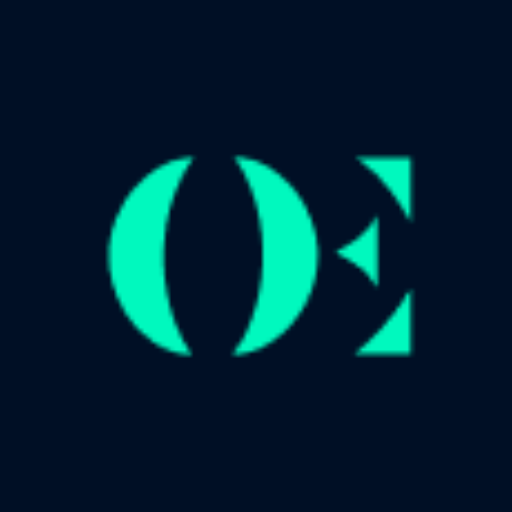PickUp Pal
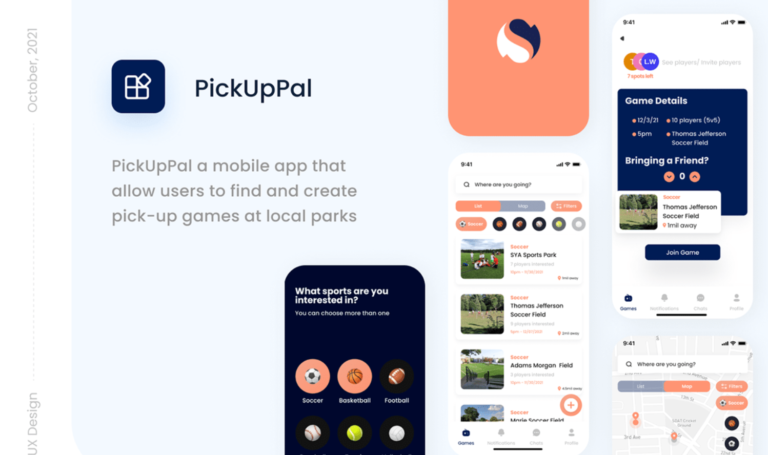
Project Overview
PickUp Pal is a mobile app that allows users to find and create pick-up games at local parks and athletic facilities efficiently.
This was a group project done for my UI/UX design class with undergraduate and graduate students majoring in interaction design.
My Role
- I was the team lead
- I worked on information architecture, Low fidelity design
- As a group, we worked on research and designs collaboratively
The Problem
Athletes experience inconveniences coordinating people, locations, and times to play pick-up sports.
How might we develop an intuitive experience for local community athletes of different skill levels who are in search of sports at public park facilities?
The Goal
Client asks:
- Increase use of public park facilities
- Facilitate participation in team sports without high commitment
- Optimize team formations focusing on building and supporting personal connections
Based on Research:
- Create and find games to join (player, location, sport, skill levels)
- Form relationships and foster communication between players to connect about pick-up sports
Research
Discovery Interviews
As a team, we each conducted discovery interviews to learn about the experiences of athletes who’ve played pick-up sports and what their expectations are for an app to streamline the process of engaging in pick-up sports
Pain Points
- Coordinating finding peeople to play with, where to play, and when to play
- Having a hard time keeping in touch with athletes playing pick-up sports
- Not finding people to play with at the park
- Finding athletes of similar playing level
Gain Points
- Make it more convenient to find pick-up games at local parks
- Create and join teams to play with
- Communicate with players before games starts
- Keep in contact with athletes you’ve played pick-up games with
Value Proposition Canvas
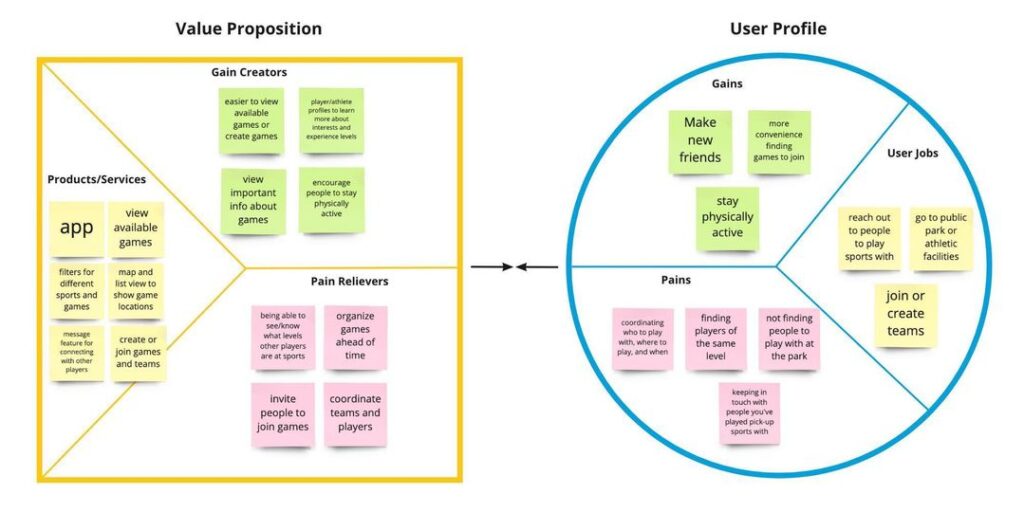
Archetypes
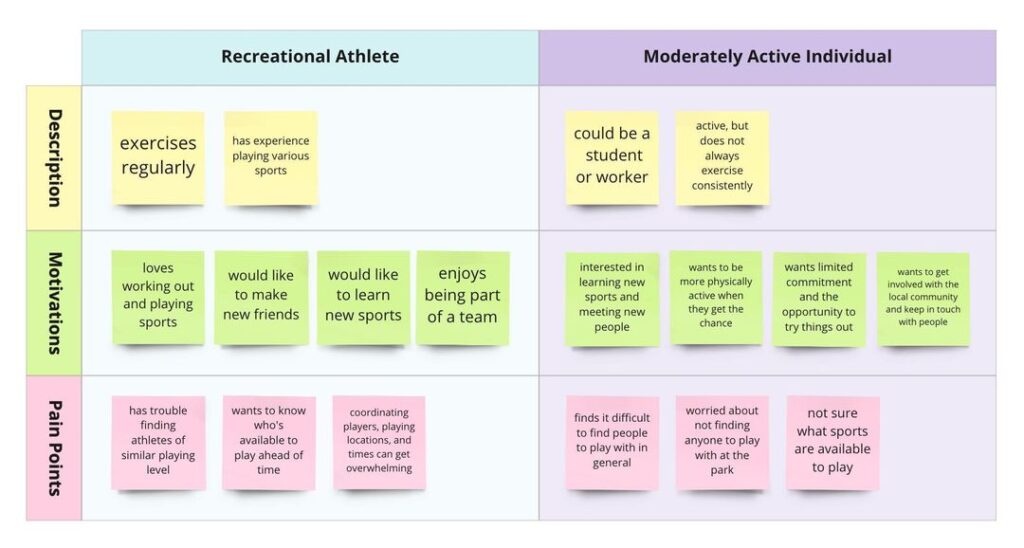
Journey Map
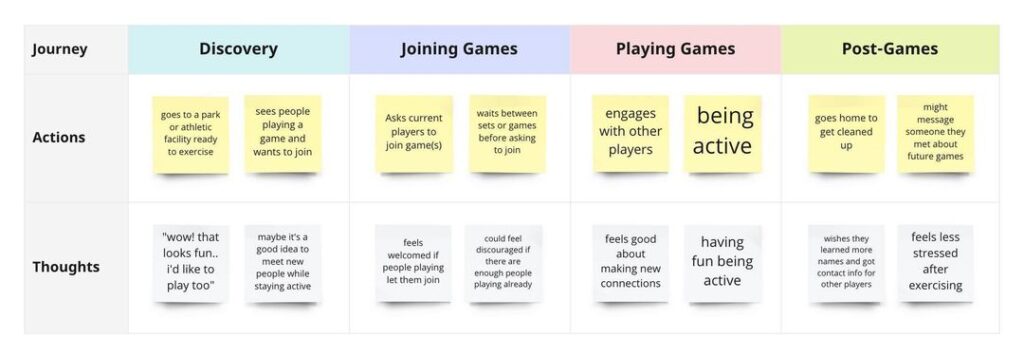
Design
Paper wireframes & Brainstorming
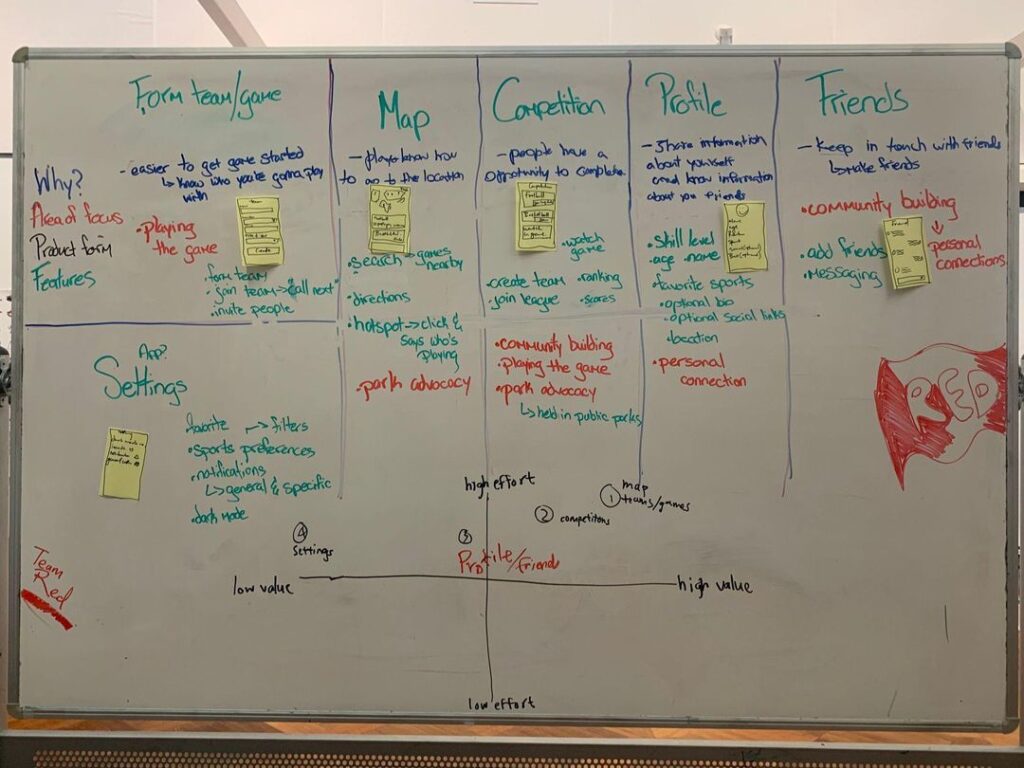
Digital Wireframes
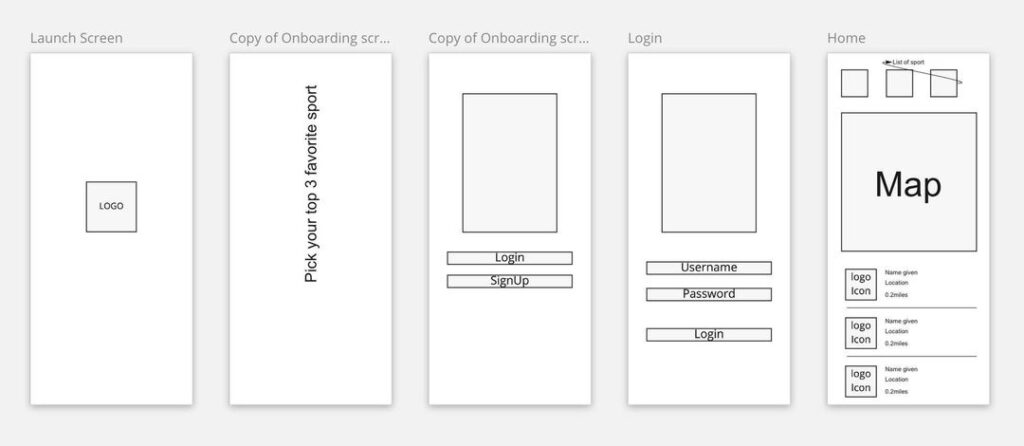
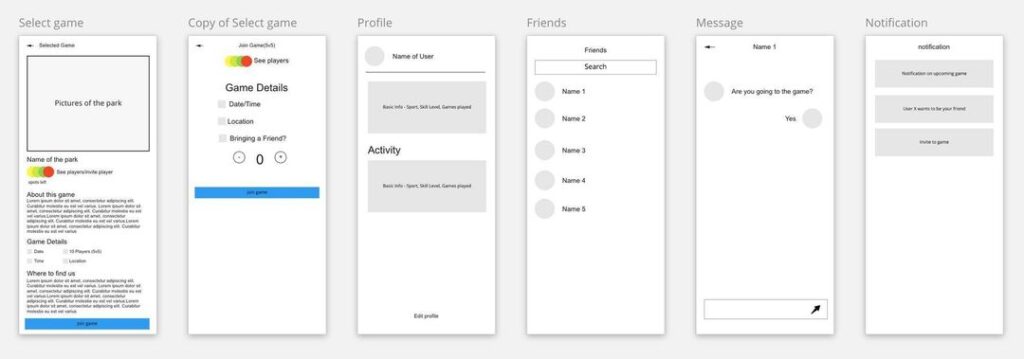
Accessibility Considerations
- Checked color contrast with commonly used text and background colors with WebAIM
- Other ideas we considered for next steps include having the search bar closer to the bottom of the screen to make it easier to reach and making the contrast of the navigation bar higher/including another form of feedback to let users know where they are in the app
Initial Prototypes
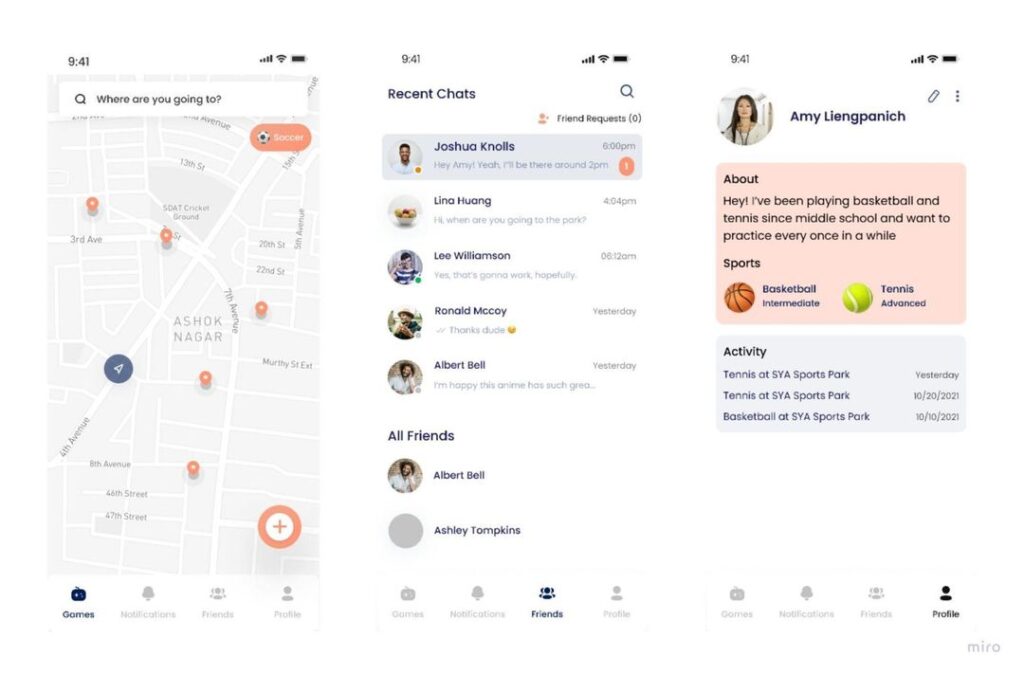
Usability Study Round 1
- Conducted our first round of usability testing with Maze. Our main priority was to make sure people could easily join games.
- Mission: Join a game
- 0% direct success
- 57.1% (4 testers) indirect success
- 42.9% (3 testers) gave up
What we learnt from heat maps and talking to testers
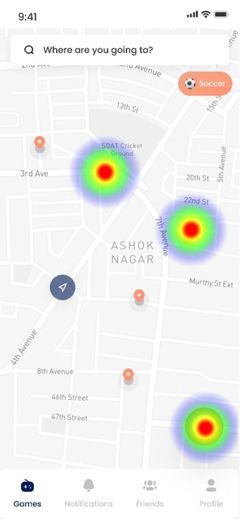
- Testers had trouble clicking on points on the map
- Testers explored other parts of the prototype before coming back to complete the mission (joining a game)
- Some testers are directional-challenged and suggested having a list view to view scheduled games
Iterating Based on Feedback
- Made areas around points on the map view clickable instead of only having a small point clickable
- Included a list view in addition to map view
- Toggle between list and map view
- Made all available sport visible on list and map view
- Included filters for open spots, proximity, and game times
- Removed points on the map that were not clickable
List View
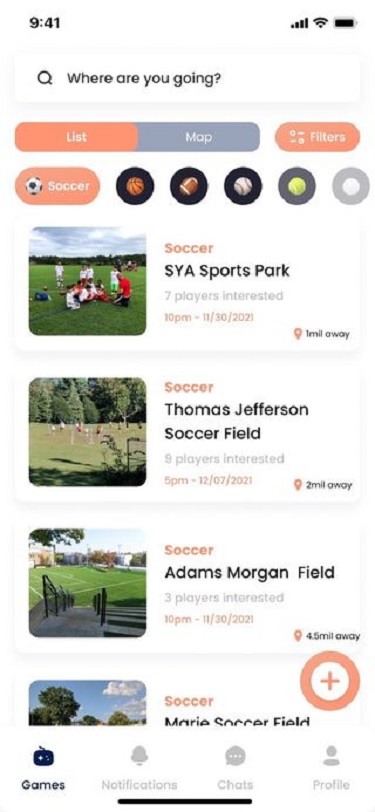
Map View
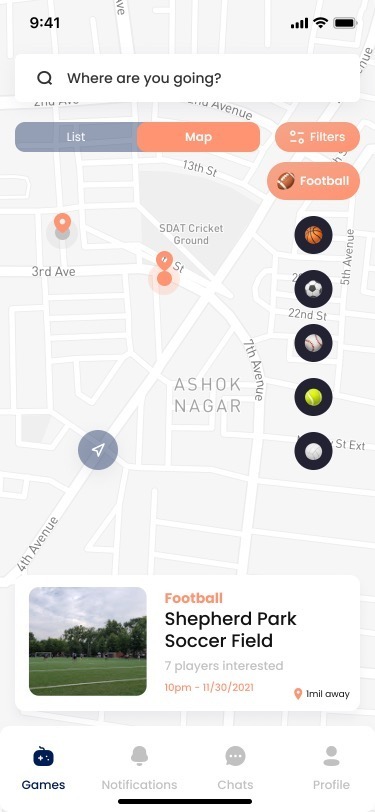
Usability Study Round 2
- Conducted usability testing with Maze again.
- Mission: Join a game – Map View
- 54.5% (12 testing) direct success
- 31.8% (7 testers) indirect success
- 13.6% (3 testers) gave up
Key Takeaways
- Validated that list view may be more intuitive for some people than the map view based on data we gathered from testing
- Continue refining map view and seek feedback on ways it could be easier to use
- Make clearer guidelines/instructions for unmoderated testing to ensure that testers focus on completing tasks instead of exploring the prototype freely
- Consider moderated testing and feedback sessions to learn about things we might not learn from unmoderated testing
High Fidelity Mockups
Login and Onboarding
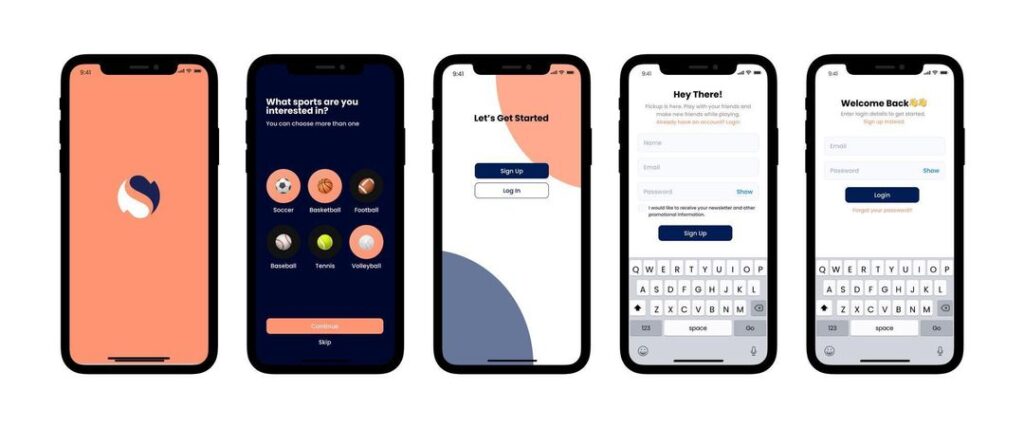
Games and Teams
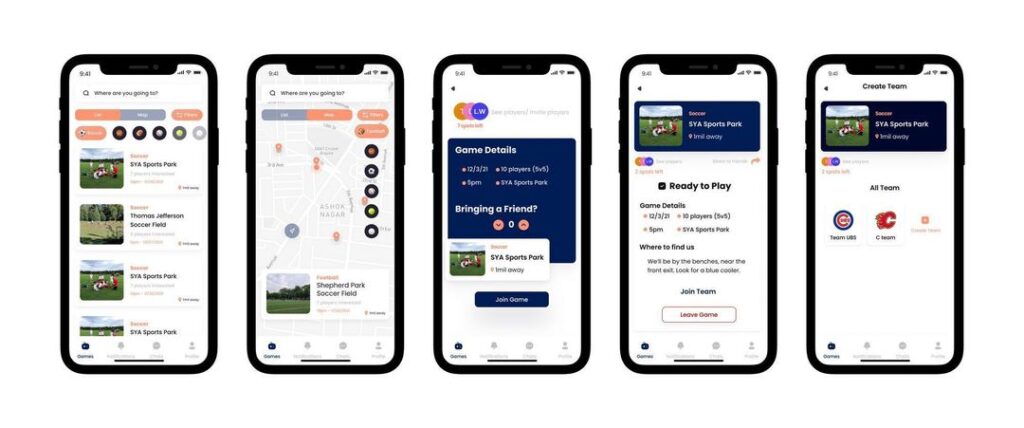
Notifications and Chats/Friends
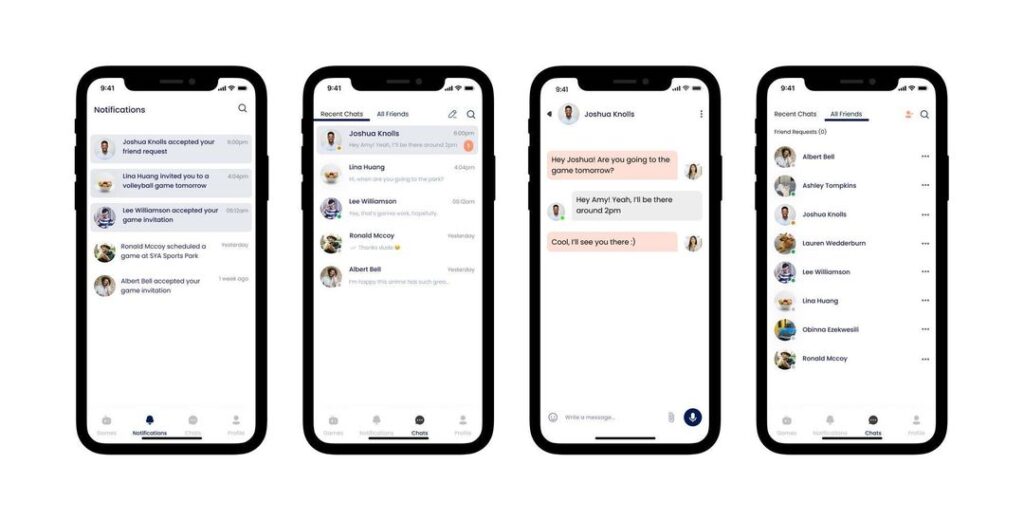
User Profile
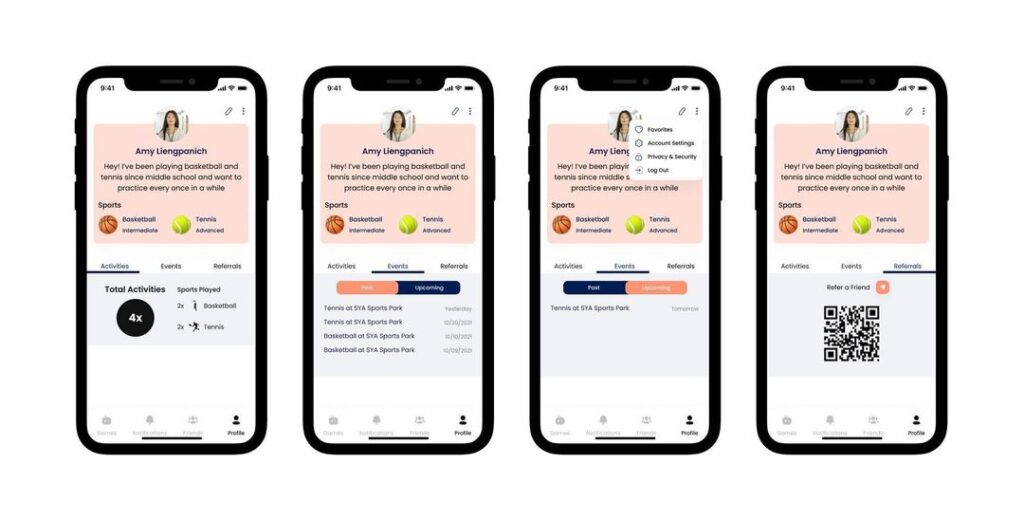
Information Architecture
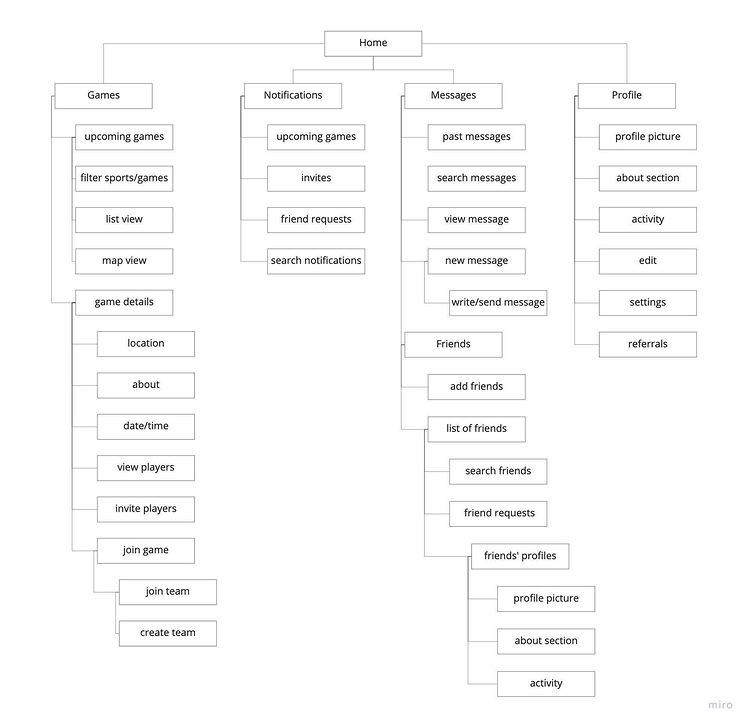
Reflection
What went well
- Communication as a team
- We were all responsive to texts/emails and communicated respectfully during group work time, which helped us get all of our idea out and stay productive.
- Contributing equally to research and design processes
- We all worked through most of the research and design processes as a group. Bouncing ideas off of each other and having direct feedback while in person or over Zoom was helpful for making decisions.
- Outside of group work, we divided up research and design task so that everyone could also spend some time working independently before coming back to discus what we did.
- Time management
- Initially, we thought six weeks wouldn’t be enough to complete everything. We ended up completing, but we planned ahead and tried our best to meet our weekly goals in order to have a minimum viable product (MVP) to present
Preview clickable prototype on figma
Here is the interactive prototype for you to play around with. here
